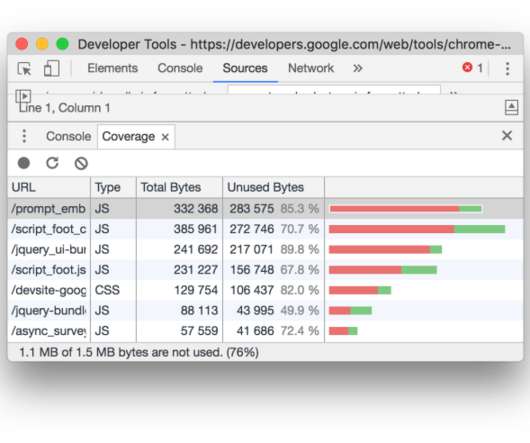CSS and Network Performance
CSS Wizardry
NOVEMBER 9, 2018
Despite having been called CSS Wizardry for over a decade now, there hasn’t been a great deal of CSS-related content on this site for a while. Let me address that by combining my two favourite topics: CSS and performance. CSS is critical to rendering a page—a browser will not begin rendering until all CSS has been found, downloaded, and parsed—so it is imperative that we get it onto a user’s device as fast as we possibly can.



































Let's personalize your content